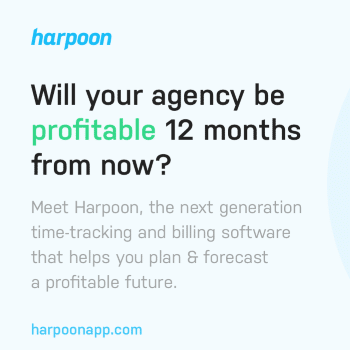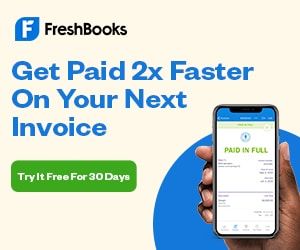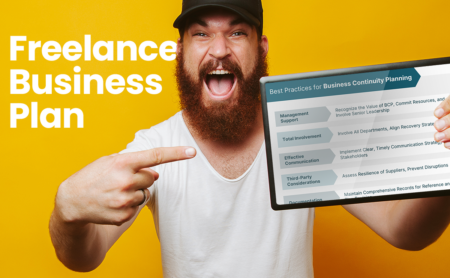Scaling Facebook ad campaigns in 2025 depends on automation tools that manage creative variation, budget allocation, and audience expansion. Manual scaling fails under volume, speed, and platform complexity. Meta’s algorithm favors simplified structures, dynamic delivery, and real-time optimization.
To scale successfully, marketers must automate creative generation, campaign budgeting, and targeting logic. This guide explains the step-by-step process, highlights recommended Facebook ad automation tools, and defines performance signals that trigger scalable growth.
Why Scaling Facebook Ads Requires Automation in 2025?
Manual scaling breaks under budget volume and ad set complexity
Manual methods fail when managing multiple ad sets at scale. As budgets exceed $1,000/day and campaigns span dozens of creatives and audiences, manual updates cause delays, overlap, and budget waste. Automation handles volume instantly with logic-based decisions.
Platform algorithms prioritize consolidated structures
Facebook’s AI performs best in unified campaign setups. Advantage+ and CBO campaigns outperform segmented structures because algorithms learn faster with more aggregated data per ad set. Consolidation increases efficiency and improves budget optimization.
Money Note: If an extra $1K–$5K/month would change your 2026 goals (debt, savings, travel, freedom), you’ll want to catch this: free live workshop from a freelancer who’s earned $4M+ online. No fluff. No gimmicks. A real roadmap. 👉 Watch the training or save your seat here »
AI allows rapid testing, faster budget reallocation, and predictive delivery
AI enables real-time adjustments based on live performance signals. Automated systems instantly reallocate budget, shift delivery to high-performing audiences, and pause underperformers. Predictive delivery ensures ads reach users most likely to convert, improving ROAS and scaling reliability.
Scaling now depends on inputs, not micro-management
Creative quality, signal clarity, and rule logic now drive scale. Success no longer comes from frequent manual edits—it comes from strong inputs. AI amplifies what it receives, so growth depends on structured testing, optimized KPIs, and consistent creative refreshes.
Core Principles of Scalable Facebook Ad Campaigns
Simplified campaign structure using CBO or Advantage+
Scalable campaigns rely on streamlined architecture. Campaign Budget Optimization (CBO) and Advantage+ replace complex manual setups by automatically distributing budgets across ad sets based on performance. Simplified structures reduce overlap, accelerate learning, and improve delivery efficiency.
High-volume, varied creatives for audience freshness
Creative fatigue limits scaling without variation. Scalable campaigns use 10–20 creatives per audience, rotating images, headlines, and CTAs to maintain engagement. Dynamic Creative Optimization and AI generation tools keep content fresh, ensuring relevance across placements and user segments.
Real-time feedback loops for auto-optimization
Continuous learning systems adjust campaigns based on live performance. Automated rules and machine learning detect underperformance and take action—pausing ads, increasing budget, or replacing assets. Feedback from engagement and conversion metrics powers scaling decisions.
Conversion signal clarity via CAPI and pixel accuracy
Scaling requires clean and complete conversion data. The Facebook Pixel and Conversions API (CAPI) must send reliable signals for purchases, leads, and other key actions. Accurate tracking improves optimization, reduces cost per result, and shortens learning phases.
Step-by-Step: How to Scale Facebook Ads Using Automation Tools
Step 1 – Prepare Scalable Creatives
Strong creatives are the foundation of scaling.
- Use AI platforms like AdCreative.ai or Pencil to instantly generate 20–100 ad variants.
- Ensure each creative matches the delivery format—vertical videos for Stories and Reels, square or landscape for Feed and In-Stream.
- Optimize for key signals such as thumb-stop rate, CTR, ROAS, and conversion rate to fuel the algorithm’s delivery decisions.
Step 2 – Implement Budget Automation
Automated budget control ensures fast and efficient scaling.
- Activate Campaign Budget Optimization (CBO) or Advantage+ Shopping for real-time budget flow across top-performing ad sets.
- Set automated scaling rules using ROAS, CPA, or spend thresholds (e.g., “Increase spend by 20% if ROAS > 3”).
- Use Revealbot or Madgicx to manage budget rules, trigger alerts, and execute daily spend adjustments.
Step 3 – Automate Audience Expansion
Scaling requires access to high-converting audience pools.
- Deploy broad audiences, 1%–5% lookalikes, and Meta’s Advantage+ targeting to remove manual targeting limits.
- Use AI-powered platforms to test and rotate segments dynamically based on engagement and conversion data.
- Retarget using CAPI signals like Add to Cart, Page View, or Purchase to create precise custom audiences with higher intent.
Step 4 – Optimize Based on Real-Time Signals
Live performance tracking enables immediate decisions.
- Use Meta Ads Manager or Madgicx dashboards to monitor CTR, CPA, ROAS, and engagement in real time.
- Auto-pause underperforming creatives or ad sets based on rule conditions (e.g., “Pause if CPA > $50 after 3 days”).
- Re-feed high-performing creatives into the system, adjusting only one variable to maintain consistency and push scale.
Best Automation Tools for Scaling Facebook Campaigns
AdCreative.ai – creative variation and predictive scoring
AdCreative.ai generates high-performing ad creatives with built-in AI scoring.
- Produces 100+ ad variants using brand assets and marketing goals.
- Ranks creatives by predicted CTR and ROAS, allowing faster testing and scaling.
- Integrates with Meta Ads Manager to deploy top-rated creatives instantly.
AdPlexity – Competitor Ads Analysis
AdPlexity reveals high-performing competitor ads across Facebook and other platforms.
- Tracks ad creatives, placements, and landing pages from top brands.
- Uncovers winning angles, formats, and audience strategies used in scaled campaigns.
- Supports ad inspiration and benchmarking for new creative directions.
Revealbot – rule-based budget and ad control
Revealbot automates campaign management with customizable rule logic.
- Sets daily and lifetime spend rules, CPA/ROAS thresholds, and scaling conditions.
- Auto-pauses underperformers and increases budget for top ads, based on real-time results.
- Syncs with Slack and Sheets for live performance tracking.
Madgicx – audience automation and smart scaling
Madgicx combines creative, audience, and bidding automation in one platform.
- Builds lookalikes, tests broad audiences, and excludes fatigued segments using AI signals.
- Optimizes bid strategy dynamically, choosing cost cap, lowest cost, or manual bids per performance.
- Ranks creatives by engagement, CTR, and ROAS for structured scaling.
Meta Ads Manager – built-in automation features
Meta Ads Manager includes native automation for budget, targeting, and delivery.
- Uses Campaign Budget Optimization, Dynamic Creative, and Advantage+ features.
- Allocates spend and placement automatically based on performance signals.
- Supports rule-based actions and real-time ad performance adjustments.
Note: Here are some Email Automation Tips; the same principles apply when using automation tools to scale Facebook campaigns. Personalization, timing, and segmentation are key to maximizing ad performance. By applying these strategies, your Facebook automation becomes more precise and impactful.
Scaling Mistakes to Avoid in 2025
AI is empowering freelancers to work smarter, faster, and more creatively, but relying solely on automation can lead to scaling mistakes.
Scaling low-performing creatives
Increasing the budget behind weak assets drains spending without return. If CTR, ROAS, or thumb-stop rate fall below benchmark thresholds, scaling accelerates inefficiency. Always validate creative performance through test results before scaling. Use predictive scoring tools like AdCreative.ai to identify winners in advance.
Ignoring data feedback loops
Scaling without real-time performance data leads to poor decisions. Neglecting live signals like CAPI events, engagement rates, or ad frequency prevents timely optimization. Feedback loops must inform budget shifts, creative swaps, and targeting refinements not post-campaign reports.
Over-segmenting audiences
Dividing audiences into too many ad sets fragments learning. With small data pools per set, Meta’s algorithm struggles to optimize delivery. Use broad targeting or 1%–5% lookalikes under consolidated campaign structures like CBO or Advantage+ for faster, scalable learning.
Underutilizing AI-based insights
Manual adjustments delay scaling decisions. AI platforms like Revealbot and Madgicx surface scaling signals instantly – ROAS surges, CPA drops, or ad fatigue signs. Not using these insights slows growth and increases cost. Always rely on AI indicators, not assumptions.

Final Framework for Scalable Campaigns
Build campaigns around Meta’s algorithm – Advantage+, Dynamic Creative, CBO. Remove manual control elements that interfere with system learning.
Strong inputs lead to strong outcomes. Supply multiple optimized creatives, brand-aligned copy, and clear conversion goals. Define ROAS, CPA, or CTR thresholds upfront to guide automated decisions.
Scale only when signals confirm readiness. Trigger budget increases when ROAS > 3, CTR > 2%, or cost per result drops below thresholds.

Keep the conversation going...
Over 10,000 of us are having daily conversations over in our free Facebook group and we'd love to see you there. Join us!


